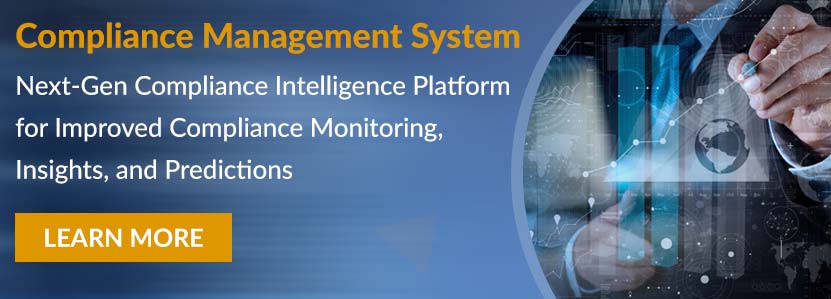Home/ Blog / The Evolution of Compliance Management in the Digital Age
The change that compliance management is going through is anything but superficial. When compliance technology was new, most available compliance tools focused on making existing compliance processes faster, this meant that compliance at its core was still operating on the same principles; it was just faster and better than it had ever been. However, as compliance technology has matured, the complexity of the changes brought on by the technology has also increased. The latest compliance management platforms are transformative and will forever change how compliance is managed not just in finance but across all industries.

The Limitations of Manual Compliance
Compliance is going through a paradigm shift because some of the core limitations that were inherent to compliance management have been removed by technology. There was no possible way for compliance departments to monitor compliance in real-time. The compliance team used audits and many other tools to make sure that regulatory compliance was being maintained. The audits would be done on a selected sample of documents and cases because it was impossible to go through every document an organization generates. This limitation meant that there was always a chance for there to be undetected compliance issues in the documentation that was not included in the data sample that was audited.
There was a similar severe limitation for the regulatory authorities. External audits are always difficult. The regulatory authorities took a sample of data as well because it was not possible to go through everything in the compliance framework. The regulatory authorities checked this limited dataset to determine the effectiveness of the compliance policies and controls in place. Limitations such as this were accepted because there was no alternative. Monitoring and testing everything was not possible for the organizations or the regulatory authorities.
Limited No More
The limitation on compliance testing and audits was a core limitation for the entire compliance domain. There are many controls in the compliance management framework that are designed to combat this limitation as much as possible. However, this limitation is no longer an inherent part of modern compliance management systems. The way compliance was managed has fundamentally changed.
Consider the compliance workflow of an organization that has a compliance management platform handling all its compliance documentation and tasks. An organization with an effective compliance management platform can do compliance monitoring, testing, and audits that are larger in scope than anything that was previously possible. Compliance management platforms do not take a sample of compliance data to determine compliance levels – they monitor all the compliance documentation and tasks to determine the compliance level in real-time.
Compliance is going through a paradigm shift because some of the core limitations that were inherent to compliance management have been removed by technology. Click To TweetWhereas previously, the compliance team could only test a sample of the hundreds of thousand documents that were generated by the organization, they can now have the compliance platform provide data about all the documents. They can look at the trends and even slice and dice the data any way they want.
Interestingly, compliance technology is now being tested by many regulatory bodies as well. The benefits of being able to process hundreds of thousands of documents in a couple of minutes are not lost on the regulatory authorities. Compliance technology has changed compliance management to such a degree that there are major changes happening on both sides – the businesses and the regulatory bodies overseeing those businesses.
The Final Destination
While compliance management has been permanently changed by technological advancement, the journey is still not complete. Looking at the trends in the compliance domain provides insights into where the industry is headed. The current direction goes towards increased automation on both sides. It is much more likely that regulatory authorities would prefer to get compliance data straight from the compliance management framework of the business. The regulatory authorities may even require real-time data instead of scheduled audits. Automation will result in businesses being able to rapidly detect and correct compliance issues throughout the organization and report the corrective actions to regulatory authorities.
There are many advantages to increased automation for all parties involved. The regulatory authorities benefit by getting more insights into businesses across the country than ever before. They will be able to detect trends and patterns in the data they receive from businesses. The businesses benefit because their work becomes easier with automation. Instead of dedicating resources to collecting and providing the required compliance information, they simply focus on the compliance management framework. The speed of compliance processes will also increase significantly, which will, in turn, enable businesses to provide faster and better services to customers.
Interested in seeing how your organization can automate compliance management and monitoring? Get in touch with our compliance experts to see how Predict360 automates and streamlines compliance activity management for better regulatory compliance results.
Request a Demo
Complete the form below and our business team will be in touch to schedule a product demo.
By clicking ‘SUBMIT’ you agree to our Privacy Policy.




